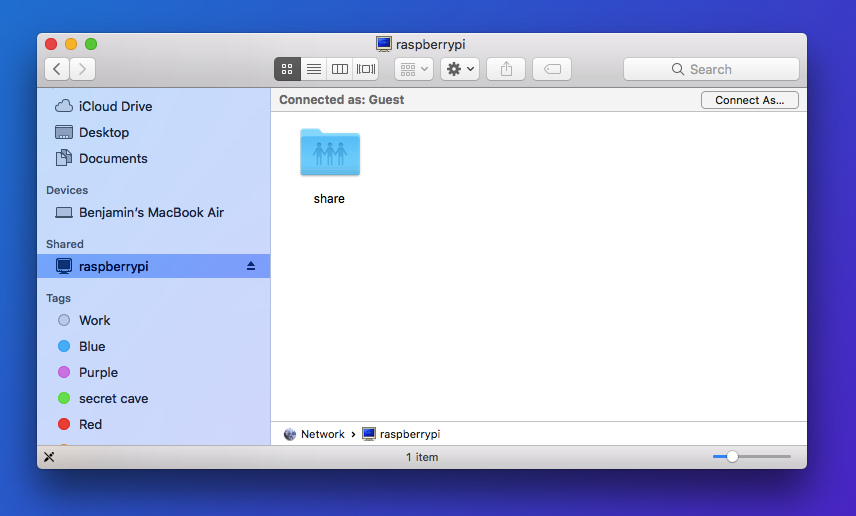
Smb Server For Mac High Sierra
Using the SMB protocol, an application (or the user of an application) can access files or other resources at a remote server. This allows applications to read, create, and update files on the remote server. SMB can also communicate with any server program that is set up to receive an SMB client request. We have a shared SMB server for storing files, which often contain spaces and other special characters. Let's say that I have a folder containing important data for a coworker. Our current workflow is. My go to tool for this is a Finder extension available on the Mac App Store. SMB, or Server Message Block, is the method used by Windows Networking, and with the Samba protocol on Mac and Unix. Our Ethernet disks run a server that supports this connection, so they can communicate with nearly all operating systems. Enables you to access and use various servers with ease. Samba also offers a replacement for domain controllers and a reliable file and print server that acts as a member. Thanks to Samba you can gain access to SMB client that enables you to use PC printers and discs directly from your Mac.
In Mac OS X, you can connect to servers that use the AppleShare, SMB, WebDAV, and NFS protocols.
Mac file sharing (AppleShare)
To connect to an AppleShare server:
Smb Server For Android
- With the Finder active, from the Go menu,select Connect to Server.... Alternatively, with theFinder active, press
Command-k. - In the
Connect to Serverwindow that opens, type the fully qualified domain name (FQDN) or IP address of the server. Click Connect. - In the authentication window that appears, type your username andpassword for the server. If the volume has guest access, selectGuest instead. Click Connect.
- Select the volume of the server and click OK.
Windows file sharing (SMB)
Note: Because SMB traffic at Indiana University isfiltered, you may not access campus SMB servers from off campus unlessyou are using VPN.
To connect to an SMB server:
- With the Finder active, from the Go menu, selectConnect to Server.... Alternatively, with the Finderactive, press
Command-k. - In the
Connect to Serverwindow that opens, next tothe 'Address:' field, typesmb://, followed by thefully qualified domain name (FQDN) or IP address of the server, aforward slash, and then the name of the shared volume (e.g.,smb://bl-dept-server.ads.iu.edu/share).Note: Windows server administrators should havereverse DNS registration for Windows servers accessed by Mac or Unixsystems.
- Click Connect.
- In the authentication window that appears, type your username andpassword for the server. You may also be asked to specify the domainwhere the server is located. For most servers at IU, use
ADS. Click OK.
WebDAV
To connect to a WebDAV server:
- With the Finder active, from the Go menu, selectConnect to Server.... Alternatively, with the Finderactive, press
Command-k. - In the
Connect to Serverwindow that opens, type theURL of the WebDAV shared volume (e.g.,http://server.address/). - Click Connect.
- In the authentication window that appears, type your username andpassword for the server, and then click OK.



NFS
To connect to an NFS server:
- With the Finder active, from the Go menu, selectConnect to Server.... Alternatively, with the Finderactive, press
Command-k. - In the
Connect to Serverwindow that opens, next tothe 'Address:' field, typenfs://, followed by thefully qualified domain name (FQDN) or IP address of the server, aforward slash, and then the path of the exported share (e.g.,nfs://foo.com/home/u/jdoe). - Click Connect.
